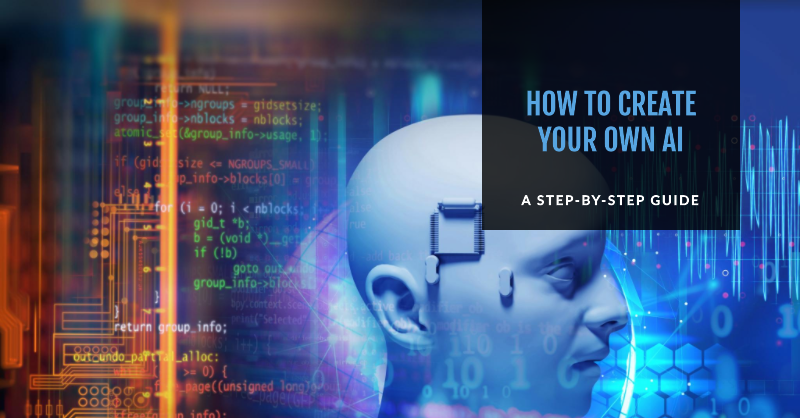
How to Create Your Own AI: A Step-by-Step Guide
Introduction
Artificial Intelligence (AI) has become a transformative technology, revolutionizing various industries and opening up exciting opportunities. If you're eager to explore the world of AI and create your own intelligent systems, this step-by-step guide will help you get started on your journey. By following these key steps, you can embark on the path to building your own AI-powered applications.
Step 1: Define Your AI Project
Start by clearly defining your AI project's goals and objectives. Determine the problem you want to solve or the task you want your AI system to perform. Whether it's image recognition, natural language processing, or predictive analytics, having a clear vision will guide your development process.
Step 2: Gather and Prepare Data
AI models require large amounts of data for training. Collect relevant datasets that align with your project's goals. Ensure the data is clean, labeled, and diverse to improve the model's performance. Preprocess and format the data to make it suitable for training and testing your AI algorithms.
Step 3: Choose an AI Framework or Platform
Select an AI framework or platform that suits your project requirements. Popular choices include TensorFlow, PyTorch, and scikit-learn. These frameworks provide powerful tools and libraries for developing AI models, making it easier to build, train, and deploy your algorithms.
Step 4: Build and Train Your AI Model
Use the chosen AI framework to build your model architecture. Design the layers, connections, and algorithms that will enable your AI system to learn from the data. Train your model using the prepared datasets, adjusting parameters and optimizing performance. Iteratively refine and improve your model until it achieves the desired level of accuracy and effectiveness.
Step 5: Evaluate and Test Your AI Model
Evaluate the performance of your trained AI model using separate test datasets. Measure metrics such as accuracy, precision, recall, or F1 score to assess how well your model performs. Iterate and fine-tune your model based on the evaluation results, ensuring it meets the desired standards.
Step 6: Deploy and Integrate Your AI System
Once your AI model is trained and tested, it's time to deploy and integrate it into your desired applications or systems. Develop the necessary interfaces and APIs to make your AI system accessible to users or other software components. Ensure proper integration, scalability, and security considerations are in place.
Step 7: Continuously Improve and Update Your AI System
AI is a rapidly evolving field, and continuous improvement is crucial. Monitor your AI system's performance and gather feedback from users or real-world data. Regularly update your model, retrain it with new data, or incorporate new AI techniques to enhance its capabilities and adapt to changing requirements.
Conclusion
Building your own AI system can be a challenging yet rewarding endeavor. By following these step-by-step guidelines, you can lay the foundation for creating intelligent applications that can solve complex problems, automate tasks, and provide valuable insights. Embrace the possibilities of AI and embark on a journey of innovation and discovery.
If you're ready to dive deeper into AI development, Blue Marloc offers comprehensive AI consulting and development services. Our team of experts can guide you through the process, ensuring your AI projects are successful and impactful. Contact us today to unlock the potential of AI for your business.



